
How to Use 2-Channel Relay (5V 10A): Examples, Pinouts, and Specs
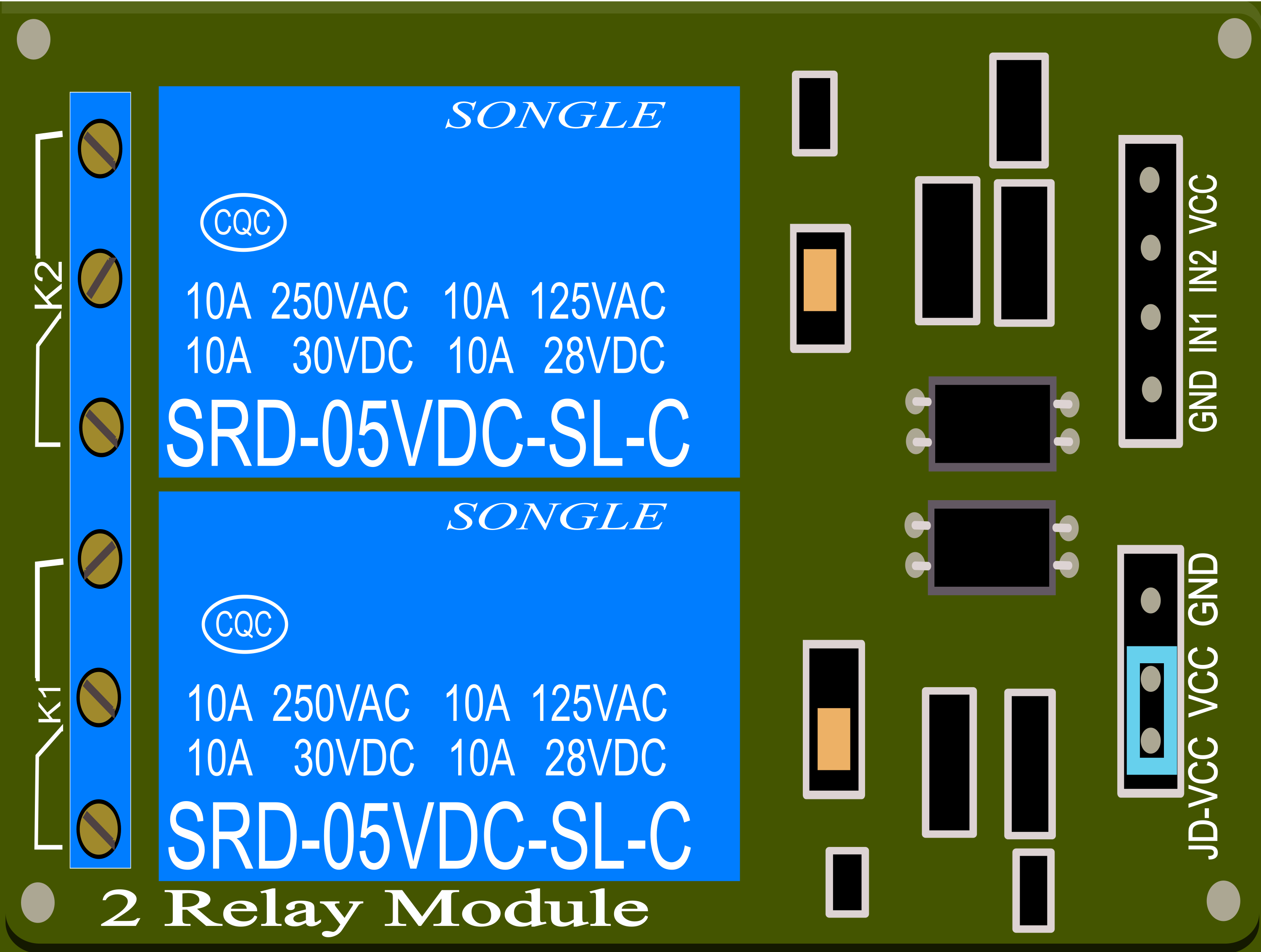
 Design with 2-Channel Relay (5V 10A) in Cirkit Designer
Design with 2-Channel Relay (5V 10A) in Cirkit DesignerIntroduction
A 2-Channel Relay is an electronic device that functions as an electrically operated switch. It allows a low-power signal to control a much higher power circuit. This particular 2-channel relay operates at 5V and can handle a maximum current of 10A per channel. It is commonly used in applications where it is necessary to control high power devices such as motors, lights, and other appliances with a low-power signal from a microcontroller like an Arduino UNO.
Explore Projects Built with 2-Channel Relay (5V 10A)
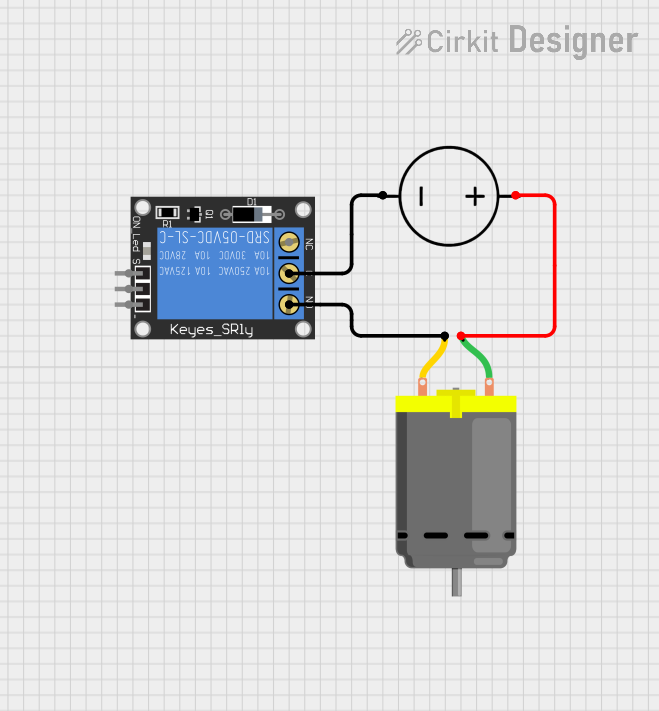
 Open Project in Cirkit Designer
Open Project in Cirkit Designer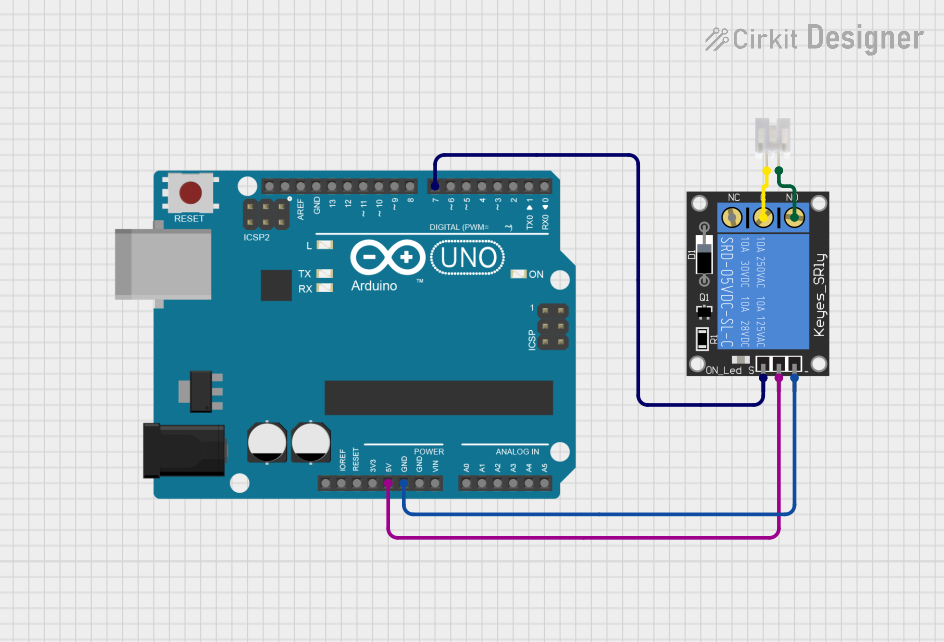
 Open Project in Cirkit Designer
Open Project in Cirkit Designer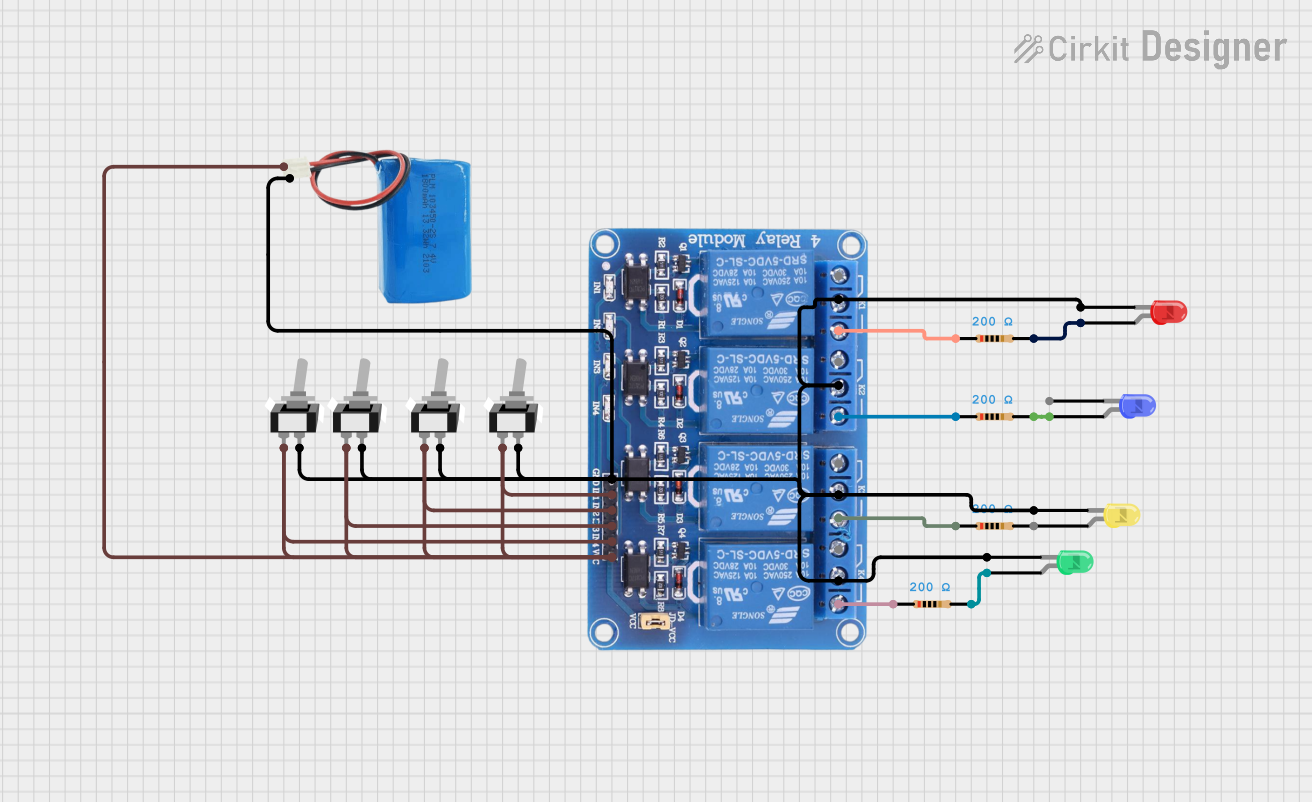
 Open Project in Cirkit Designer
Open Project in Cirkit Designer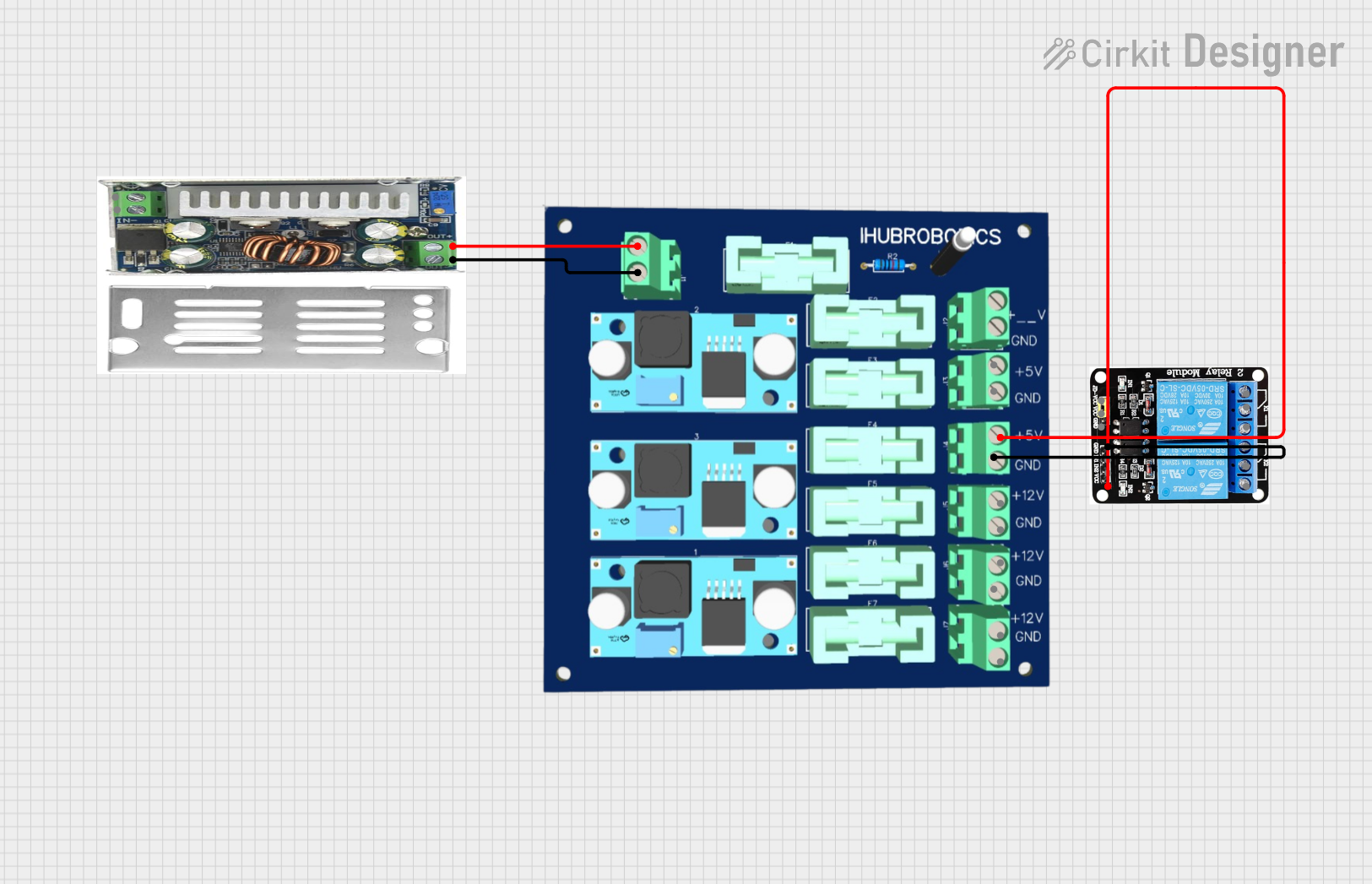
 Open Project in Cirkit Designer
Open Project in Cirkit DesignerExplore Projects Built with 2-Channel Relay (5V 10A)

 Open Project in Cirkit Designer
Open Project in Cirkit Designer
 Open Project in Cirkit Designer
Open Project in Cirkit Designer
 Open Project in Cirkit Designer
Open Project in Cirkit Designer
 Open Project in Cirkit Designer
Open Project in Cirkit DesignerCommon Applications and Use Cases
- Home automation systems
- Remote control switches
- Industrial controls
- Automotive electronics
- Robotics
Technical Specifications
Key Technical Details
- Operating Voltage: 5V DC
- Maximum Current: 10A per channel at 250V AC or 30V DC
- Number of Channels: 2
- Control Signal: TTL level from 0V to 5V
- Contact Type: SPDT (Single Pole Double Throw)
- Switching Time: Typically 5-10ms
Pin Configuration and Descriptions
| Pin Number | Description | Type |
|---|---|---|
| 1 | VCC | Power |
| 2 | GND | Ground |
| 3 | IN1 | Input |
| 4 | IN2 | Input |
| 5 | COM1 (Common) | Output |
| 6 | NO1 (Normally Open) | Output |
| 7 | NC1 (Normally Closed) | Output |
| 8 | COM2 (Common) | Output |
| 9 | NO2 (Normally Open) | Output |
| 10 | NC2 (Normally Closed) | Output |
Usage Instructions
How to Use the Component in a Circuit
- Connect the VCC pin to a 5V power supply.
- Connect the GND pin to the ground of the power supply.
- Connect the IN1 and IN2 pins to the digital outputs of a microcontroller.
- Connect the device you wish to control to the COM (Common) and NO (Normally Open) or NC (Normally Closed) pins.
Important Considerations and Best Practices
- Ensure that the power supply does not exceed 5V as it may damage the relay.
- Do not exceed the maximum current rating of 10A per channel.
- Use flyback diodes when controlling inductive loads to prevent back EMF damage.
- Always ensure proper isolation between the low voltage and high voltage sides.
Example Code for Arduino UNO
// Define relay control pins
const int relayPin1 = 2;
const int relayPin2 = 3;
void setup() {
// Set relay pins as output
pinMode(relayPin1, OUTPUT);
pinMode(relayPin2, OUTPUT);
// Initialize relays to OFF (Normally Open state)
digitalWrite(relayPin1, LOW);
digitalWrite(relayPin2, LOW);
}
void loop() {
// Turn on relay 1
digitalWrite(relayPin1, HIGH);
delay(1000); // Wait for 1 second
// Turn off relay 1
digitalWrite(relayPin1, LOW);
delay(1000); // Wait for 1 second
// Turn on relay 2
digitalWrite(relayPin2, HIGH);
delay(1000); // Wait for 1 second
// Turn off relay 2
digitalWrite(relayPin2, LOW);
delay(1000); // Wait for 1 second
}
Troubleshooting and FAQs
Common Issues
- Relay not activating: Check the wiring and ensure the control signal is reaching the relay. Also, verify the power supply is 5V.
- Intermittent operation: Ensure that there is no loose connection and the current does not exceed 10A.
- Noise issues: When controlling inductive loads, ensure a flyback diode is used to suppress voltage spikes.
Solutions and Tips for Troubleshooting
- Double-check all connections, especially the ground between the Arduino and the relay module.
- Use a multimeter to verify the presence of the control voltage at the relay's input.
- If controlling AC loads, ensure proper safety measures and consider consulting a professional electrician.
FAQs
Q: Can I control this relay with a 3.3V signal? A: While the relay operates at 5V, some 5V relays can be triggered with a 3.3V signal. However, it is best to check the datasheet or test the relay with a 3.3V signal to ensure reliable operation.
Q: Is it safe to control mains voltage with this relay? A: Yes, the relay can switch mains voltage, but you must ensure proper safety precautions and isolation. If unsure, seek professional assistance.
Q: Can I use PWM to control the relay? A: Relays are not designed for high-speed switching and using PWM is not recommended. They are intended for on/off control with a sufficient delay between switching.